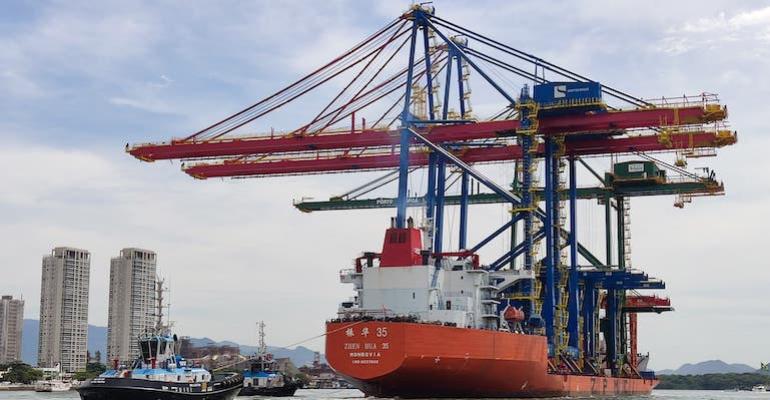Santos Brasil has invested $45 million in these cranes - $ 22 million for e-RTGs and $23 million in quay cranes and will invest $8.15 million in electrical and civil infrastructure works to adapt the terminal yard to the new equipment.
The eight e-RTGs add to the other 39 diesel RTGs currently in operation. With the two new quay cranes, the terminal's fleet of gantry cranes will increase to 13 (10 ZPMC brand and three IMPSA) – all electric.
The company's plan is to acquire two other ZPMC gantry cranes and carry out the gradual replacement of the current RTGs with electrical equipment over the next few years.
Replacing a traditional RTG with an electric model allows a reduction of around 21 tonnes of CO2/month of GHG (greenhouse gas) emissions. Full electrification of RTGs will lead to a 97% reduction in GHG emissions from such equipment at the terminal. The increase in energy consumption at Tecon Santos will be offset through the purchase of renewable energy (I-REC).
"We are starting an important movement towards the sustainable growth of the port, increasing Tecon Santos capacity without significant impacts on the environment," said Antonio Carlos Sepúlveda, CEO of Santos Brasil.
The equipment is part of the several initiatives already being implemented by the company to become carbon neutral by 2040. They also make up the project to expand and modernise Tecon Santos, one of the largest and most efficient container terminals in South America, which will invest around $530 million to increase its terminal capacity to 3 million teu, up from current capacity of 2.4 million teu.
Copyright © 2024. All rights reserved. Seatrade, a trading name of Informa Markets (UK) Limited.
Add Seatrade Maritime News to your Google News feed.  |

